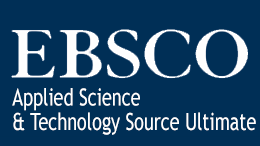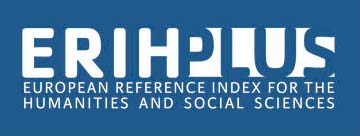Abstract
Supporting Institution
yok
Project Number
Fırat Üniversitesi Girişimsel Olmayan Araştırmalar Etik Kurulu 14.01.2021 tarihli 2021/01-29 sayılı
References
- 1. Karayağız Muslu G, Öztürk C. Tamamlayıcı ve alternatif tedaviler ve çocuklarda kullanımı. Çocuk Sağlığı ve Hastalıkları Dergisi. 2008;51:62–7.
- 2. Khorshi̇d L, Yapucu Ü. Tamamlayıcı Tedavilerde Hemşirenin Rolü. Atatürk Üniv Hemşirelik Yüksekokulu Dergisi. 2005;8(2):124–30.
- 3. Dokken D, Sydnor-Greenberg N. Exploring complementary and alternative medicine in pediatrics: parents and professionals working together for new understanding. Pediatr Nurs. 2000;26(4):383–90.
- 4. Ernst E. Prevalence of use of complementary/alternative medicine: a systematic review. Bulletin of the World Health Organization. 2000;78(2):252–7.
- 5. Porsuk AO, Cerit C. Views of Healthcare Professionals to Traditional and Complementary Medicine. International Journal of Traditional and Complementary Medicine Research IJTCMR. 2021;2(3):146–52.
- 6. Maruyama Y. Who Traditional Medicine Strategy: 2014-2023. In: Kalaycı MZ, editor. Geleneksel Tamamlayıcı ve Alternatif Tıp Uygulamalarına Uluslararası Bakış Konferansı Bildirisi. İstanbul: T.C. Sağlık Bakanlığı Yayın No:949; 2014. p. 39–41.
- 7. Barnes PM, Powell-Griner E, McFann K, Nahin RL. Complementary and alternative medicine use among adults: United States, 2002. Advanced Data. 2004;343:1–19.
- 8. Altın A, Aydın Avcı İ. Complementary and alternative treatment methods used for patient care bycaregivers to alzheimer’s disease at home. TAF Preventive Medicine Bulletin. 2016;15(6):525–31.
- 9. Oral B, Öztürk A, Balcı E, Sevinç N. State of opinions and use about traditional / alternative medicine who applied to family health center. TAF Preventive Medicine Bulletin. 2016;15(2):75–82.
- 10. Tan M, Uzun O, Akçay F. Trends in Complementary and Alternative Medicine in Eastern Turkey. The Journal of Alternative and Complementary Medicine. 2004 Nov 9;10(5):861–5.
- 11. Othman CN, Farooqui M. Traditional and Complementary Medicine. Procedia - Social and Behavioral Sciences. 2015 Jan 27;170:262–71.
- 12. Bielory L. Adverse reactions to complementary and alternative medicine: ragweed’s cousin, the coneflower (echinacea), is “a problem more than a sneeze.” Annals of Allergy, Asthma & Immunology. 2002 Jan 1;88(1):7–9.
- 13. Jacobsson I, Jönsson AK, Gerdén B, Hägg S. Spontaneously reported adverse reactions in association withcomplementary and alternative medicine substances in Sweden. pharmacoepidemiology and drug safety. 2009;18:1039–47.
- 14. Araz A, Harlak H, Meşe G. Sağlık Davranışları ve Alternatif Tedavi Kullanımı. TSK Koruyucu Hekimlik Bülteni. 2007;6(2):112–22.
- 15. Kanodia AK, Legedza ATR, Davis RB, Eisenberg DM, Phillips RS. Perceived Benefit of Complementary and Alternative Medicine (CAM) for Back Pain: A National Survey. The Journal of the American Board of Family Medicine. 2010;23(3):354–62.
- 16. Çekiç Ş, Canıtez Y, Çiçek F, Karalı Y, Karalı Z, Sapan N. Investigation of theuse of Complementary and Alternative Medicine in Childhood Allergic Diseases. Osmangazi Journal of Medicine. 2021;43(1):76–81.
- 17. Wharton R, Lewith G. Complementary medicine and the general practitioner. Br Med J (Clin Res Ed). 1986;292(6534):1497–500.
- 18. Siti ZM, Tahir A, Farah AI, Fazlin SMA, Sondi S, Azman AH, et al. Use of traditional and complementary medicine in Malaysia: a baseline study. Complementary Therapies in Medicine. 2009;17(5–6):292–9.
- 19. Who Global Report on Traditional and Complementary Medicine. Geneva: World Health Organization; 2019. 29–50.
- 20. Hailemeskel B, Habte A, Fullas F, Al-Matari RA. A Survey on the Use of Complementary and Alternative Medicine Among Ethiopian Immigrants in the USA. J Complement Med Alt Healthcare. 2017;1(4):1–7.
- 21. Erdem R, Koçaş M. Individuals Knowledge Of Traditional And Complementary Medicine Practices And A Review On Them. SDÜ Sağlık Yönetimi Dergisi. 2019;1(2):64–81.
- 22. Odabaş ÖK, Ağadayı E. Knowledge and Behaviors of Patients Applying to Family Medicine Clinic about Traditional and Complementary Medicine. Turkish Journal Family Medicine and Primary Care. 2021;15(1):121–8.
The Examination of the Use of Traditional, Complementary and Alternative Medicine and Practices by Turkish Citizens and Syrians Under Temporary Protection
Abstract
As of the mid-twentieth century, rapid advances in disease diagnosis and treatment had increased the use of complementary and alternative therapies.
Material and Method: This study was conducted among Syrians under temporary protection aged 18 and over and Turkish citizens in the province of Elazig, located in the Eastern Anatolia region of Turkey. The number of people to be sampled was calculated as 295. The study included the same number of Turkish citizens as the control group.
Results: Participants learned about Traditional Complementary and Alternative Medicine and Applications most frequently from family. The first three methods mostly used by Syrians under temporary protection were the use of herbal products with 93.9%, bloodletting therapy and cupping therapy with 46.8%. Among Turkish citizens, the first three mostly used methods were the use of herbal products with 88.1%, cupping therapy with 13.6%, and bloodletting therapy with 10.5%. While 98.0% of Turkish individuals reported experiencing side effects from traditional complementary medicine practices, 46.1% of Syrians under temporary protection reported experiencing side effects.
Conclusion: Participants learned about Traditional Complementary and Alternative Medicine and Practices most frequently from family members. Access to information on this subject should be facilitated. Awareness-raising studies should be carried out, especially in the use of herbal products.
Project Number
Fırat Üniversitesi Girişimsel Olmayan Araştırmalar Etik Kurulu 14.01.2021 tarihli 2021/01-29 sayılı
References
- 1. Karayağız Muslu G, Öztürk C. Tamamlayıcı ve alternatif tedaviler ve çocuklarda kullanımı. Çocuk Sağlığı ve Hastalıkları Dergisi. 2008;51:62–7.
- 2. Khorshi̇d L, Yapucu Ü. Tamamlayıcı Tedavilerde Hemşirenin Rolü. Atatürk Üniv Hemşirelik Yüksekokulu Dergisi. 2005;8(2):124–30.
- 3. Dokken D, Sydnor-Greenberg N. Exploring complementary and alternative medicine in pediatrics: parents and professionals working together for new understanding. Pediatr Nurs. 2000;26(4):383–90.
- 4. Ernst E. Prevalence of use of complementary/alternative medicine: a systematic review. Bulletin of the World Health Organization. 2000;78(2):252–7.
- 5. Porsuk AO, Cerit C. Views of Healthcare Professionals to Traditional and Complementary Medicine. International Journal of Traditional and Complementary Medicine Research IJTCMR. 2021;2(3):146–52.
- 6. Maruyama Y. Who Traditional Medicine Strategy: 2014-2023. In: Kalaycı MZ, editor. Geleneksel Tamamlayıcı ve Alternatif Tıp Uygulamalarına Uluslararası Bakış Konferansı Bildirisi. İstanbul: T.C. Sağlık Bakanlığı Yayın No:949; 2014. p. 39–41.
- 7. Barnes PM, Powell-Griner E, McFann K, Nahin RL. Complementary and alternative medicine use among adults: United States, 2002. Advanced Data. 2004;343:1–19.
- 8. Altın A, Aydın Avcı İ. Complementary and alternative treatment methods used for patient care bycaregivers to alzheimer’s disease at home. TAF Preventive Medicine Bulletin. 2016;15(6):525–31.
- 9. Oral B, Öztürk A, Balcı E, Sevinç N. State of opinions and use about traditional / alternative medicine who applied to family health center. TAF Preventive Medicine Bulletin. 2016;15(2):75–82.
- 10. Tan M, Uzun O, Akçay F. Trends in Complementary and Alternative Medicine in Eastern Turkey. The Journal of Alternative and Complementary Medicine. 2004 Nov 9;10(5):861–5.
- 11. Othman CN, Farooqui M. Traditional and Complementary Medicine. Procedia - Social and Behavioral Sciences. 2015 Jan 27;170:262–71.
- 12. Bielory L. Adverse reactions to complementary and alternative medicine: ragweed’s cousin, the coneflower (echinacea), is “a problem more than a sneeze.” Annals of Allergy, Asthma & Immunology. 2002 Jan 1;88(1):7–9.
- 13. Jacobsson I, Jönsson AK, Gerdén B, Hägg S. Spontaneously reported adverse reactions in association withcomplementary and alternative medicine substances in Sweden. pharmacoepidemiology and drug safety. 2009;18:1039–47.
- 14. Araz A, Harlak H, Meşe G. Sağlık Davranışları ve Alternatif Tedavi Kullanımı. TSK Koruyucu Hekimlik Bülteni. 2007;6(2):112–22.
- 15. Kanodia AK, Legedza ATR, Davis RB, Eisenberg DM, Phillips RS. Perceived Benefit of Complementary and Alternative Medicine (CAM) for Back Pain: A National Survey. The Journal of the American Board of Family Medicine. 2010;23(3):354–62.
- 16. Çekiç Ş, Canıtez Y, Çiçek F, Karalı Y, Karalı Z, Sapan N. Investigation of theuse of Complementary and Alternative Medicine in Childhood Allergic Diseases. Osmangazi Journal of Medicine. 2021;43(1):76–81.
- 17. Wharton R, Lewith G. Complementary medicine and the general practitioner. Br Med J (Clin Res Ed). 1986;292(6534):1497–500.
- 18. Siti ZM, Tahir A, Farah AI, Fazlin SMA, Sondi S, Azman AH, et al. Use of traditional and complementary medicine in Malaysia: a baseline study. Complementary Therapies in Medicine. 2009;17(5–6):292–9.
- 19. Who Global Report on Traditional and Complementary Medicine. Geneva: World Health Organization; 2019. 29–50.
- 20. Hailemeskel B, Habte A, Fullas F, Al-Matari RA. A Survey on the Use of Complementary and Alternative Medicine Among Ethiopian Immigrants in the USA. J Complement Med Alt Healthcare. 2017;1(4):1–7.
- 21. Erdem R, Koçaş M. Individuals Knowledge Of Traditional And Complementary Medicine Practices And A Review On Them. SDÜ Sağlık Yönetimi Dergisi. 2019;1(2):64–81.
- 22. Odabaş ÖK, Ağadayı E. Knowledge and Behaviors of Patients Applying to Family Medicine Clinic about Traditional and Complementary Medicine. Turkish Journal Family Medicine and Primary Care. 2021;15(1):121–8.
Details
| Primary Language | English |
|---|---|
| Subjects | Traditional, Complementary and Integrative Medicine |
| Journal Section | Research Articles |
| Authors | |
| Project Number | Fırat Üniversitesi Girişimsel Olmayan Araştırmalar Etik Kurulu 14.01.2021 tarihli 2021/01-29 sayılı |
| Publication Date | April 4, 2022 |
| Submission Date | January 18, 2022 |
| Published in Issue | Year 2022 |
Cite
IJTCMR
International Journal of Traditional and Complementary Medicine Research





